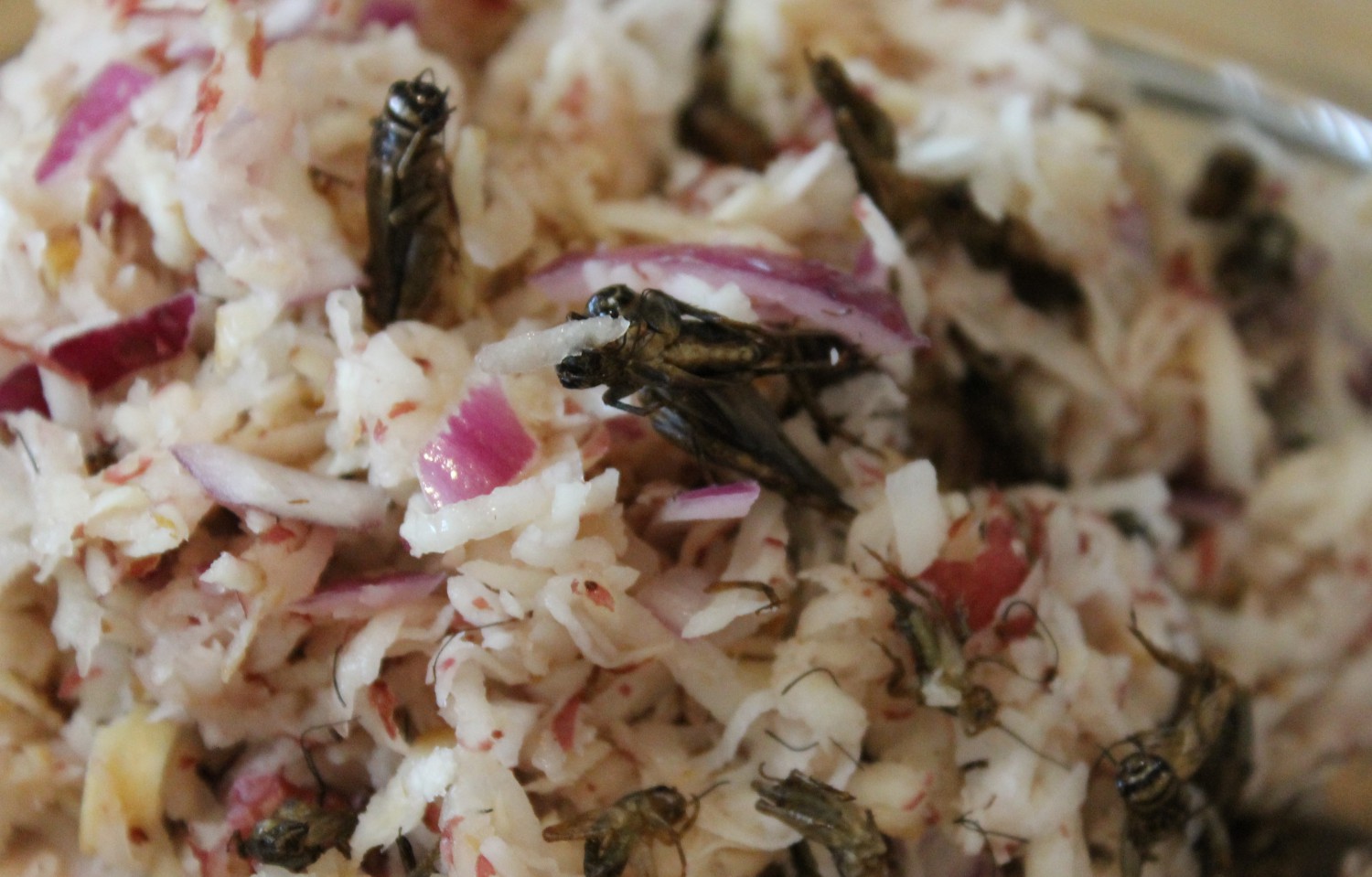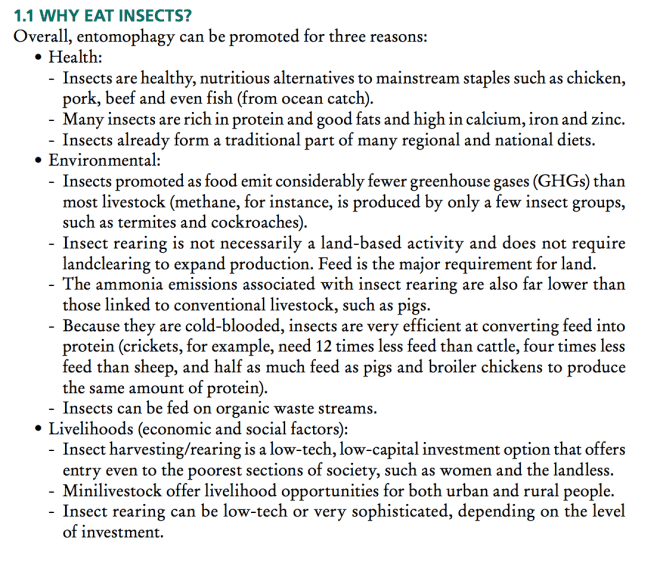I was completely unprepared for Andrew Middleton when he showed up at my front door with a bag full of crickets, which he wanted to cook for my family. This was my fault. We’d talked about Andrew coming over for a buggy dinner, but I’d messed up the scheduling, and I wasn’t expecting him for another week. Conditions were less than perfect: My wife, Beth, and I were both exhausted. Our baby had been keeping us up nights, and our 3-year-old, Josephine, was running a fever. But after a brief family huddle, we decided to go for it. The evening was already a disaster; might as well eat bugs.
Josephine eyed this stranger skeptically. He knelt and produced an orange plastic beetle from his pocket. “I have a present for you,” he said. She lit up with joy.
“Papa,” she said. “I know who he is! He’s a person who comes to kid’s houses when they are sick and gives them bugs.”
I’d met Andrew online; he’s been reading Grist for years and lives nearby. His interest in bugs isn’t professional — he’s simply a born naturalist. Andrew is excited about eating bugs for a couple reasons: They provide a lot of lean protein, and they are wonderfully efficient. Most of the feed we give to livestock — a lot of corn and soy — could also be fed to humans, and so, as Andrew put it, “It takes about five pounds of human food to get one pound of human food out of a cow. Bugs are closer to 2-to-1, so they are a lot more efficient. They consume a lot less water.”
The entomologist Marcel Dicke has laid out these arguments in an amusing TED talk. The U.N. Food and Agriculture Organization has pointed out that most people around the world already eat insects, and it has endorsed their benefits. There are lots of good reasons to eat bugs, if we could get over our Western taboo.
Andrew fried up a mess of crickets while I grated potatoes. We would be eating cricket tacos, cricket-studded latkes, and bread made from cricket flour. I told Andrew not to expect too much from my ailing 3-year-old, but he was hopeful that she would like his food.
There are, at this point, at least a dozen startups producing insects for eating. Ours were — disclosure! — a gift from Aspire (slogan: “Insects to Feed the World”). Someone from the company had seen me and Andrew talking about eating bugs on Twitter and sent him a sample. If we could figure out how to eat more insects and less meat on a global scale, we could turn a lot of ag land back to wilderness. Some insects, like termites, can digest cellulose, turning things we can’t eat (grass and wood) into protein. Insects might feed poor children, who sometimes suffer severe disorders from lack of protein. But there are still problems: No one has figured out how to grow insects on an industrial scale. Also, they tend to gross us out.
When Grist staffers experimented with insect eating, it seemed to go pretty well. And after I ate a couple crickets out of the frying pan, they didn’t seem gross or weird. They didn’t have any flavor; Andrew had added some nice spices, and I didn’t taste anything beyond that. But they did have a slightly objectionable mouthfeel. Crickets have exoskeletons made from chitin — the same stuff that crabs and shrimp use to make their shells — and it doesn’t break down easily between the molars. Still a little crunch isn’t such a bad thing.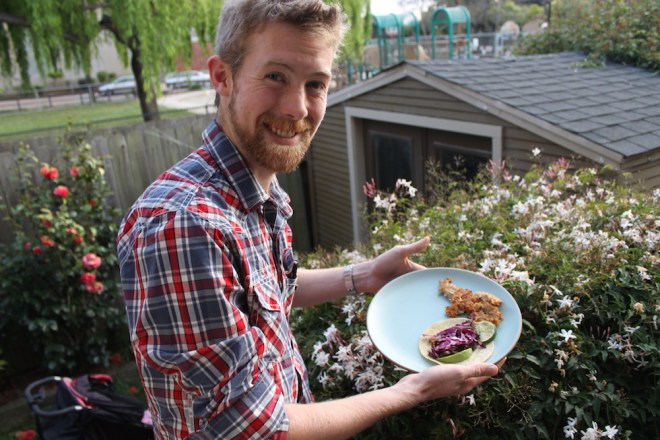
“Just think of them as land shrimp,” Andrew said.
Yeah, land shrimp! I thought. People could get into that. Throw another land shrimp on the barbie! Then Beth came into the kitchen.
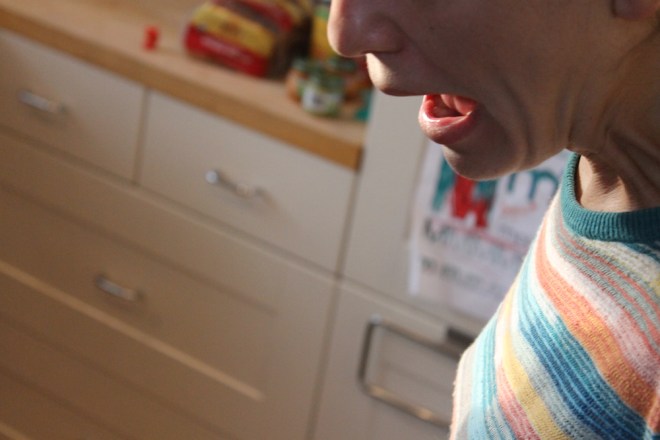
She was … excited?
We offered some crickets to the baby. She seemed confused but amenable. Then again, that’s how she is pretty much all the time. In the end, Beth said, I couldn’t let her eat any bugs, even though she strained to reach them and protested when I took them away. That was probably a good call — she would have probably sucked a leg into her lung or something. She’s not exactly a discriminating eater: At this point her mission in life is to consume everything and anything.
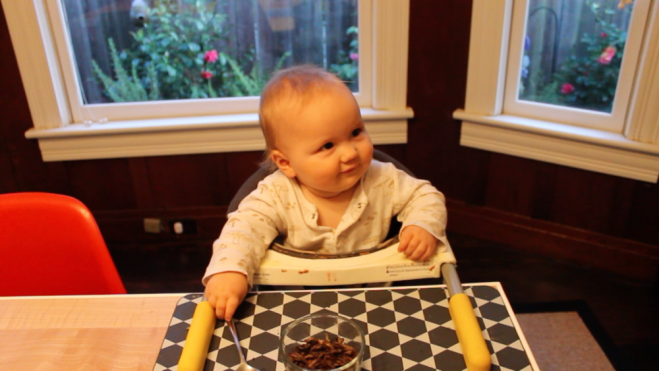
There’s something to consider here: Disgust and food taboos aren’t innate, they are learned. All babies recoil from bitterness (indicative of poison) and seek sweetness. But it’s only by imposing our cultural prejudices that we teach children that insects are gross (in the United States) or normal food (in Laos, for instance). I suspected our cultural aversion to bugs, like the soundtrack to Frozen, had already seeped into my older daughter.
The moment of truth came. We sat down to eat. Josephine was still feeling sick and might have skipped dinner under normal circumstances, but she was curious about this bug man.

“I’m going to get you some really good bug nuggets,” Andrew told her. “I hope you are ready for that.”
Andrew slid some latkes onto her plate as she surveyed the scene. “Are those tortillas?” she asked, pointing at what must have seemed like the least objectionable item on the table.
“Yes,” said Andrew. “And you can put bugs in them.”
“I don’t like bugs,” she said.
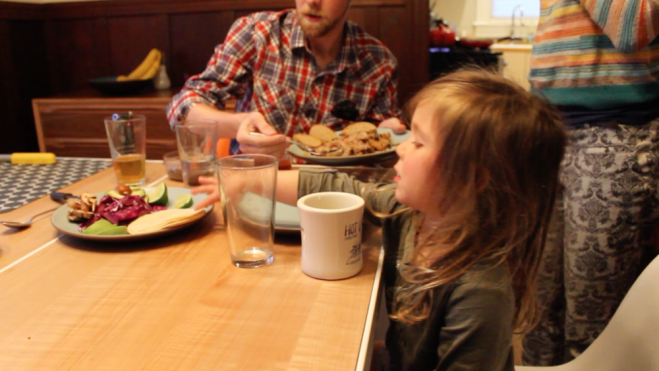
“Well there are some bugs in these,” he said, pointing to the latkes. “Is that OK?”
“No,” she repeated, in a baleful tone. “I don’t like bugs.”
“You don’t like bugs?”
“Well they are a little yucky, but not soooo yucky.”
Beth combed Josephine’s hair out of her eyes with a finger. “You know Josephine? I’m 35 and I’ve never eaten a bug.”
Andrew seemed surprised. “You’ve never eaten a bug! Do you want to eat a bug with me?”
“I’m a little nervous,” Beth said.
“Let’s start with these,” said Andrew, grabbing a bowl of fried spiced crickets. “They are nice and crispy like potato chips.” Josephine set her cup down with a thunk and looked up at the words “potato chips.” “They look scary, but they’re not,” Andrew continued.
“I’m not scared of those,” Josephine piped. And she reached over and fished one out.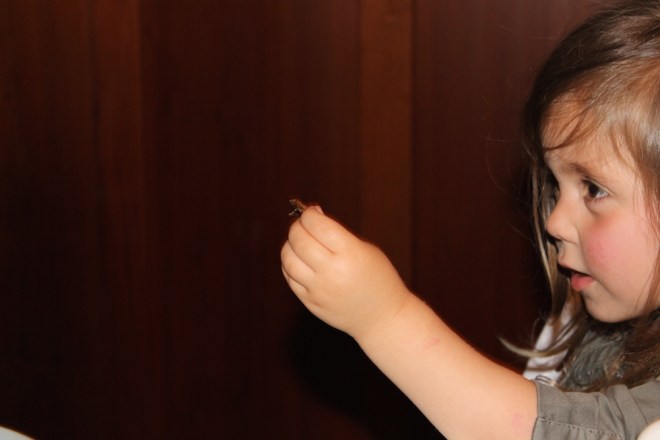
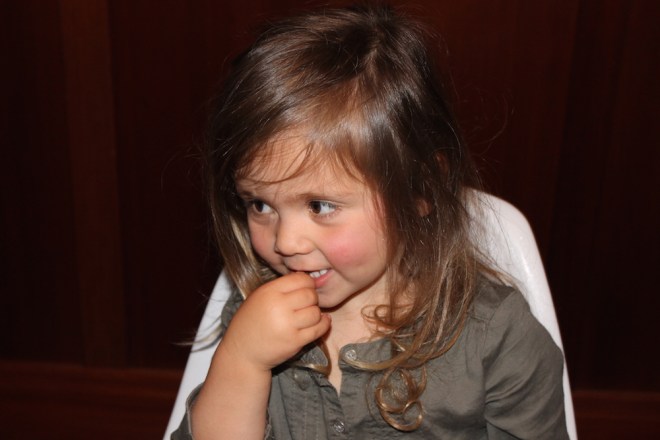
Beth shot me a silent look of astonishment. Josephine took another. She seemed pretty pleased with herself.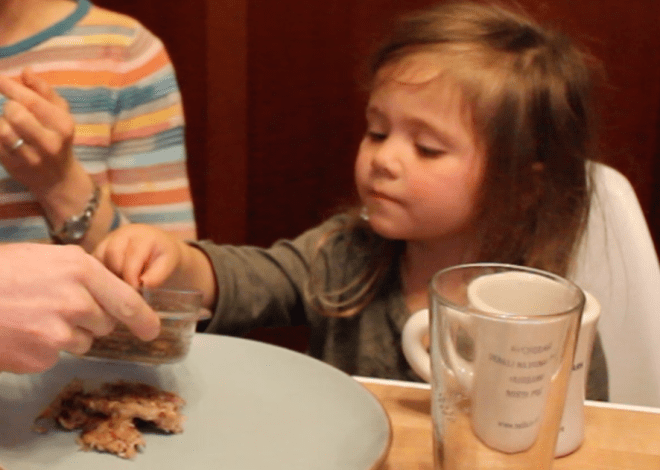
For some reason the plain crickets were an easier sell than the ones combined with other foods. I find that kids have an aversion to eating food that is all mixed up. I remember feeling this way as a child, and I see it in Josephine: You want to be confident of what you are putting in your mouth. When it’s lots of chunks all mixed together in your latke, you don’t know when you are going to get a cricket. But if you can choose your own cricket, and see exactly what you are eating, then, hey, why not?
“They are tasty,” Beth said, chewing. “What do they remind me of? I guess they remind me of seafood.”
The tacos were my favorite. The condiments were delicious — avocado, red cabbage, lime — and the crickets provided a little unobtrusive crunch. I don’t think they added anything to the taste; they were just a nice high-protein filler.
Now, these tacos weren’t as good as, say, carnitas tacos in San Francisco. When I said this to Andrew, he protested: “That’s a really high bar.”
True. Andrew is a professional map maker, not a professional chef. Anyway, I almost never order the carnitas, since I prefer my pork from pigs that have had the chance to go outside. (Going vegetarian radically upends the hierarchy of San Francisco burrito joints, incidentally. Locals debate these rankings endlessly, but they generally judge by the meat flavors, not the bean and cheese varieties.)
Beth was a little less enthusiastic than Josephine. She had a couple tacos but her heart wasn’t in it.
Andrew left me with a big container of the beasties and half a loaf of cricket-flour bread. The bread was good — you’d never know it contained ground-up insects (or, rather, more ground-up insects than usual). It was tougher to eat the whole crickets. I was hiding them in my food, doing my best to make them undetectable. I really wanted them to be features, but they remained bugs.
I found myself struggling to eat the rest of the crickets. It wasn’t that they were bad, or gross. I just didn’t know what to with them to make ’em good. I can understand what it was like for the first people who tried to figure out how to eat artichokes, or rhubarb, or lobster. There’s no culinary tradition to guide us in the U.S. as we begin to experiment with cooking insects.
I’m ashamed to admit that I tipped the last cup or so of crickets into the compost. I’m no longer grossed out by eating bugs; I’d be happy if they were expertly processed into “animal protein” to supplant hot-dog meat. My mind is ready to eat insects. But my mouth is going to need a little assistance from the food technologists and chefs. Maybe my kids won’t need as much help.

